Labour market situation
Social Security adds 325,554 employed people so far this year, after 51 months of uninterrupted employment growth
News - 2024.8.2
The Social Security registered 21,168,490 contributors in July, discounting seasonality and the calendar effect, which represents an increase of 325,554 employed so far this year and 485,580 compared with the same month in 2023. It has now been 51 months of uninterrupted growth in employment, after adding 1,335 more registered workers in July.
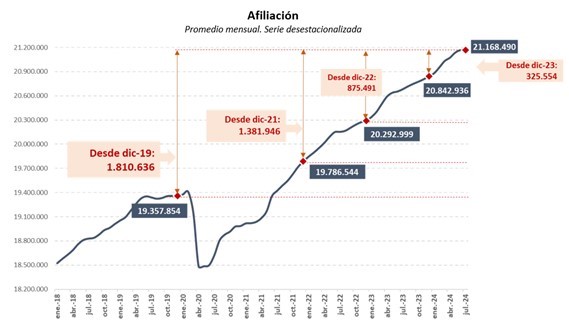
In seasonally adjusted terms, there has been an increase of more than 1.8 million workers since before the pandemic.
In July, the average number of contributors (original series) was also very positive and remained close to 21.4 million (21,383,106), 491,221 more than a year ago (+2.4%).
The Minister for Inclusion, Social Security and Migration, Elma Saiz, assessed the data positively, given that Spain "has been creating jobs for 51 consecutive months". She added: "It also consolidates the 21 million barrier that we surpassed in April, a milestone that must be reached every month in which the record is maintained".
In month-on-month comparison, the sector that has grown the most in the General System is Health and Social Services Activities, with 49,133 more contributors (2.6%), followed by Trade (44,443). All General System activities grew except Education and Other Services.
In year-on-year terms, the growth in Education stands out, with 143,314 more contributors (14.9%). Health Care and Social Activities also increased in the last year, with 73,403 more employed people (3.9%); Commerce added 56,236 (2.2%) and Hotels and Restaurants, 55,703 (3.5%).
The daily series exceeded 21.4 million contributors for eleven days continuously between 15 and 25 July.
Higher employment growth than other major European economies
Moreover, job creation compared to pre-pandemic levels in Spain (+9.4%) outpaced that of the major European countries (France, +5.2%, Italy +3.9% and Germany, +1.7%). These countries have experienced greater dynamism since the beginning of the war in Ukraine. In Spain, job creation grew by 7.4%, compared to 4.9% in Italy, 2.3% in France and 1.9% in Germany.

There are more than 10 million women contributors
In July, an average of 10.05 million women were employed. Women contributors represent more than 47% of the total number of employed.
Female employment growth since the year before the pandemic stands at 11.8%, and is 4 points higher than the 7.8% increase among men. In year-on-year terms, the figure for women contributors is also outpacing that of male contributors: 2.7%, compared to 2% for men.
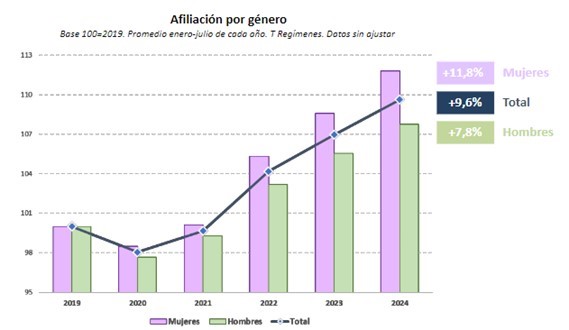
Meanwhile, youth employment has also experienced above-average dynamism, with an increase of 15.5% since 2019, 5.9 points higher than the overall (9.6%), and 21.4% since the implementation of the labour reform, almost double the overall increase.
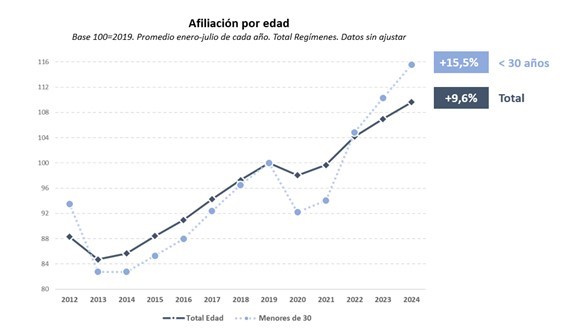
The number of self-employed workers is at its highest level since 2008. Last month, the number of people self-employed stood at 3,381,485.
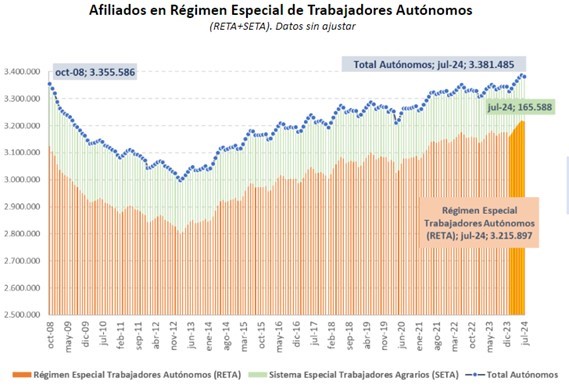
High value-added occupations
The increased contributor figures compared to the pre-pandemic level is particularly strong in high value-added sectors, such as Information and Communication and Professional, Scientific and Technical Activities. These activities also showed significant growth in the first half of 2024, with increases of more than 4%, compared to a national average of 2.8%.
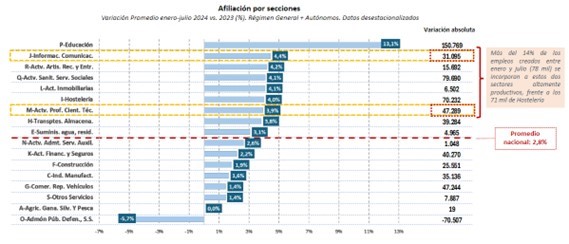
Greater stability: A total of 3.5 million more workers with permanent contracts since the labour reform was passed
There are currently more than 14 million people in employment with permanent contracts, of whom more than 9.6 million work full-time. This represents 3.5 million more contributors (3,497,939) with permanent contracts since the approval of the labour reform.
In the last year, the number of permanent full-time contracts grew more sharply (364,931 more) than part-time contracts (89,498 more), while the number of permanent temporary contracts fell (12,929 fewer).
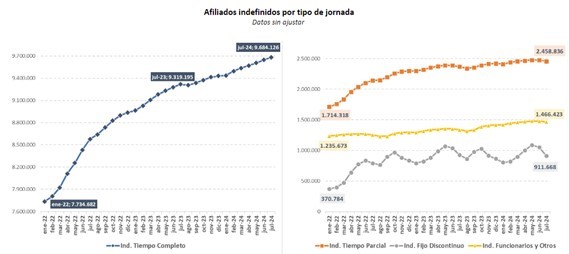
The dynamism of the labour market and the increase in the quality of employment is helping to strengthen the sustainability of the pension system, with social security contributions rising by 7.5% in the first six months of the year, and the ratio of contributors to pensioners standing at 2.43, the highest level since 2011.
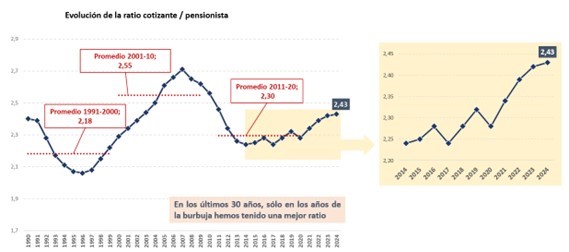
Non official translation





